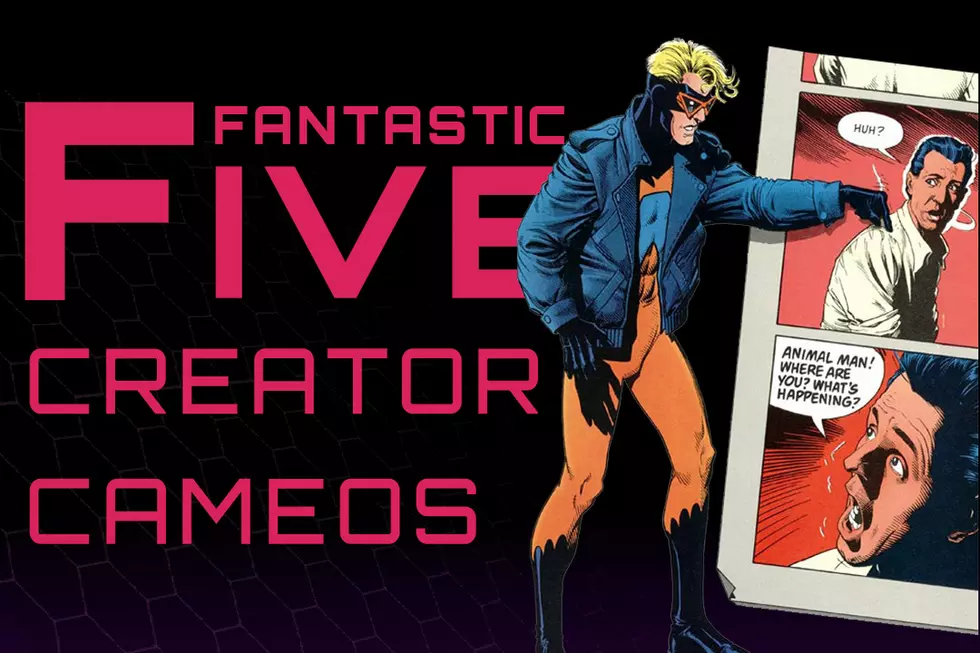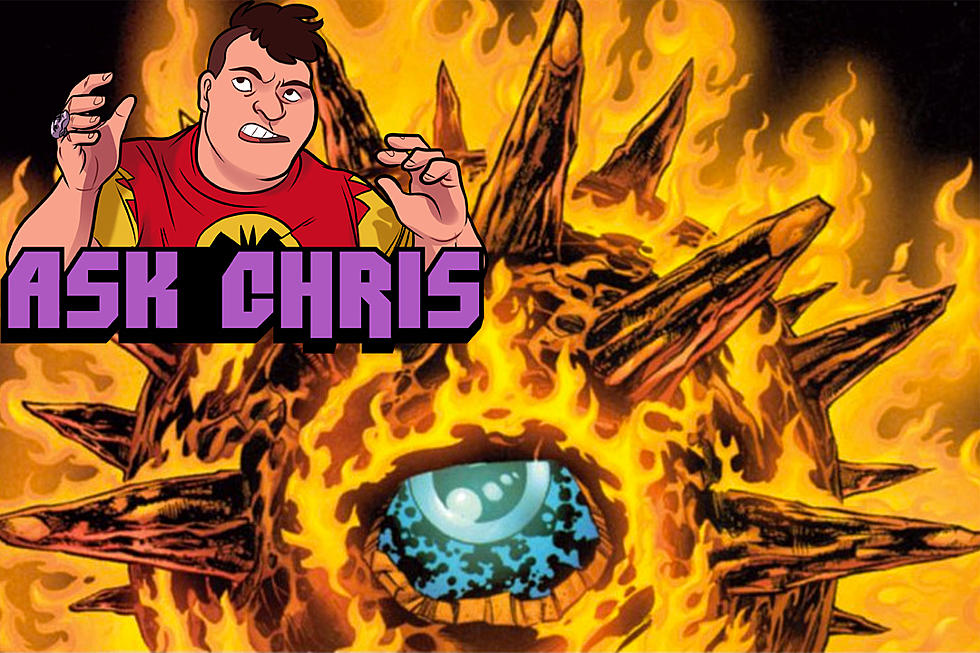
Five Great Comic Book Adaptations Of Movies (And One That’s Just Really Cool But Kind of Terrible)
Back before the VHS tape made it possible to watch the movies you wanted when you wanted (as long as Blockbuster had a copy in stock), movie novelizations and comic book adaptations of films were some of the only options fans had when it came to reliving a movie they wanted on-demand. While the majority of these were rightly viewed as cash-ins that let comics companies float on someone else's success, there were the occasional pieces of work that proved to be something more. For example, Marvel's off-model, six-part Star Wars adaptation proved to be so popular in the summer of 1977 that many credit it for helping the company pull out of a fiscal free-fall, even as it acted as a bog-standard 1970s Marvel book in a lot of ways.
Now that we can watch Magic Mike on our phones any time we want, comic adaptations can seem like a quaint throwback. However, some of them are legitimate pieces of comic history in their own right, providing an alternate look at our favorite films even as they gave a few comic creators the chance to play with the medium in a new way. In this piece, we take a look at five of them, including long lost work by Jack Kirby, Jim Steranko, Walt Simonson, Kyle Baker and Bill Sienkiewicz and more.
- 1
Jim Steranko's 'Outland'

For a creator who's cast such a long shadow across the medium (and Twitter), Jim Steranko's body of actual comics output is remarkably slender. Outside of his issues of Nick Fury: Agenty of SHIELD, very little is easily available to a comics fan that wants to see more of his work. One such out-of-print work by Steranko was his Heavy Metal-serialized adaptation of Peter Hyams' 1981 Sean Connery space-cop flick Outland.
Packed with intense double-page spreads and storytelling that's as driven by graphic design as any other element, Outland succeeds as a comic far better than it does as an actual movie, carrying a lot of story in its forty-odd pages. Steranko's economy works well, shaving the story down to its essentials to create a noir-infused tale that sells the dangers of man and space in equal doses.

As a matter of fact, if I'm given a choice between watching Sean Connery goldbrick his way through what feels like a poorly-paced SyFy mashup of High Noon and Alien (which was also adapted for the pages of Heavy Metal; I'll be talking about that in a bit) and sitting down with a stack of old magazines packed with Steranko doing his thing, I'll pick the latter every time.
- 2
Jack Kirby & Frank Giacoia's '2001: A Space Odyssey'

It's hard to imagine two sensibilities more opposite in tone than those of Jack Kirby and Stanley Kubrick. Kirby's grandiosity acts as a stark contrast to the calculated distance of Kubrick and for this alone, his eight-years-after-the-fact adaptation of 2001 really shouldn't work. Against everything, though, the adaptation succeeds by choosing to take a new path, mashing up three different versions of the material -- novel, screenplay and final product -- and adding Kirby's off-kilter dynamism to create a final product that's as wonderful as it is "wrong."
The original film is (obviously) full of space, figuratively and literally. Kubrick allows the camera to rest, giving the audience an opportunity to breathe in the recycled air and vastness of the universe. An absence of dialogue and narration helps further the film's atmosphere, providing a base from which the stunning visuals stand out even more. This draws the audience in, forcing them to pay attention to what's not being said just as much as what is. This sort of subtlety is exactly the sort of thing that Kirby has no interest in; he's going to tell you the story. With words and pictures. Deal with it.

Kubrick's mostly-silent approach makes dramatic moments like HAL 9000's murder of Frank Poole even more chilling. The viewer is trusted to fill in the blanks on what's happening in moments like this; the objective, wide-angle lens tells you everything you need to know and ambiguity is part and parcel of the viewing experience. Kirby instead chooses to hammer home every moment, sacrificing Kubrick's almost-casual plot mechanics in order to gut-punch the reader in an oversized Treasury format.

The comic book adaptation of 2001: A Space Odyssey isn't a perfect adaptation or comic book by any stretch (in fact, I'd love to see what comic creators that understand silence -- Chris Ware and Gabriel Hardman come to mind -- could do with scenes from the movie) but it is a rewarding summation of Kirby's storytelling excesses and successes. From the dawn of man through the final psychedelic moments, Kirby's unique approach to the material provides a fascinating alternative, one that continued through a low-selling monthly series that explored the place of the Monolith through history. In a perfect world, someone would be working to sort out the licensing rights so we end up with an Artist's Edition-style reprint of this bizarre piece of history, but until we get out of the darkest timeline, you're relegated to eBay and back issue bins.
- 3
John Moore, Len Wein and Kyle Baker's 'Dick Tracy'

Warren Beatty's 1990 Dick Tracy movie was a bit of a mixed bag, to say the least. Visually brilliant on occasion and frequently stupid in equal measure, it was a labor of love for Beatty that he was obviously just a bit too close to. Buena Vista's marketing did their job, though, and looked to Batman's successful campaign a year before as an example and that included comic books, naturally.
Interestingly (and for the first time as far as I can tell), Disney Comics opted to do more than just an adaptation of the film: they commissioned John Moore and Kyle Baker for a pair of graphic novel-length prequels, Big City Blues and Dick Tracy vs The Underworld, setting up the status quo as seen at the beginning of the movie and fleshing out the backstory for characters such as Breathless Mahoney (played in the film by Madonna).

The writing is frequently clunky and you can often feel the pressure of mandates being handed down by the the film's producers, but Baker (who had already written and drawn a body of work as diverse as The Cowboy Wally Show and Why I Hate Saturn along with handling art chores on DC Comics' version of The Shadow and Marvel's adaptation of Howard The Duck) makes it all work. His deft cartooning helps meet the expectations of the front office (good likenesses!) even as it succeeds on its own terms. In fact, when Moore is given a bit of leeway in the prequel volumes, the scripting has a certain snap to it and it begins to feel like something special could happen.

Sadly, Len Wein's script for the actual adaptation suffers in that regard, but seeing as how copies sell for as little as $1.25 on Amazon, Dick Tracy: The Complete True Hearts and Tommy Guns Trilogy is a fine addition to anyone's Kyle Baker library.
- 4
Ralph Macchio and Bill Sienkiewicz's 'Dune'

Okay, so a comic adaptation of a movie based on a novel is going to have a lot going against it from the start, but throw in the fact that David Lynch's version of Frank Herbert's 800-page political science fiction opus is a near-incomprehensible fever dream and you're looking at a recipe for disaster.
That is, of course, why you call in Bill Sienkiewicz.

Bill Sienkiewicz!

Bill Sienkiewicz!!

BILL SIENKIEWICZ!!!!

As you'll notice is a recurring theme with these pieces, the Dune adaptation is long out of print. That said, it's worth seeking out because it should set you back a very modest amount at most.
- 5
Archie Goodwin and Walt Simonson's 'Alien'

Like Outland, the adaptation of Alien was published by Heavy Metal but in addition to serialization, they also reprinted it in an oversized graphic novel.
Alien: The Illustrated Story is an example of a lower page count working to make a better adaptation. The creators work with the larger page size to ensure that each one matters. Simonson's panel arrangements are nothing short of masterful throughout, with storytelling that's simultaneously easy to follow and dynamic. This page is an example of how effectively the creators used what they were given: three minutes on film is compressed into 13 panels, but it never seems rushed or compressed.

Iconic movie moments such as the chestburster feel fresh thanks to their control of the medium, as if they were developed specifically for comics. The pacing, page design, color, even John Workman's letters all sell the Alien comic adaptation as its own work, not an easy cash grab.

Just a year before this, Goodwin and Simonson turned in a serviceable (and occasionally very good) adaptation of Close Encounters of the Third Kind. There, they were plagued with likeness rights issues and a script that greatly that changed during shooting, but it helped establish a methodology that the perfected with Alien.

Thanks to Prometheus and a revived interest in the Alien universe, Alien: The Illustrated Story is now available in a remastered reprint paperback as well as an oversized "Original Art" edition that reprints Simonson's work at its original size.
- 6
Bonus: Michael Fleisher, Gene Colan and Dave Hunt's 'Little Shop Of Horrors'

When Frank Oz directed a film version of an off-Broadway musical based on Roger Corman's 1960 low-budget horror-comedy Little Shop Of Horrors, he had a lot going for him: great songs by Alan Menken, a funny screenplay from Howard Ashman based on his stage play, and a cast that was up for it. It's a movie that history has treated more kindly than the audience did at the time, and a recently-released director's cut of the flick is a delight for fans of horror, comedy and musicals, helping to repair the damage to all three genres caused by generations of The Rocky Horror Picture Show fans.
The comic book adaptation, though? It's just plain weird, and a lot of its problems can be summed up by watching this clip of Steve Martin's performance of "Dentist!"
...and then looking at this page from the adaptation:
Not only could they not secure the likeness rights for any of the cast but Fleisher and his editors decided to adapt every song from the film into an inner monologue that basically turns each character into Brad Pitt from 12 Monkeys. It doesn't work particularly well as black comedy in comic-book form or as an adaptation of a film, but it's strangely compelling anyway, mostly because of Gene Colan and Dave Hunt's sterling work.

The comic book adaptation of Little Shop Of Horrors is the very definition of inessential, but I can't help but be fascinated by it. If you're a fan of Gene Colan or the film itself, it's well worth picking up from a 50-cent bin just for the sheer implausibility of the final product.
More From ComicsAlliance




![Super7 ReAnimates Alien and Predator, Masters More of the Universe [Toy Fair 2017]](http://townsquare.media/site/622/files/2017/02/IMG_2000.jpg?w=980&q=75)

![The Wild, Tear-Filled World of Heartbreak: The Best Romance Comic Covers Ever [Love & Sex Week]](http://townsquare.media/site/622/files/2017/02/featured1.png?w=980&q=75)






















